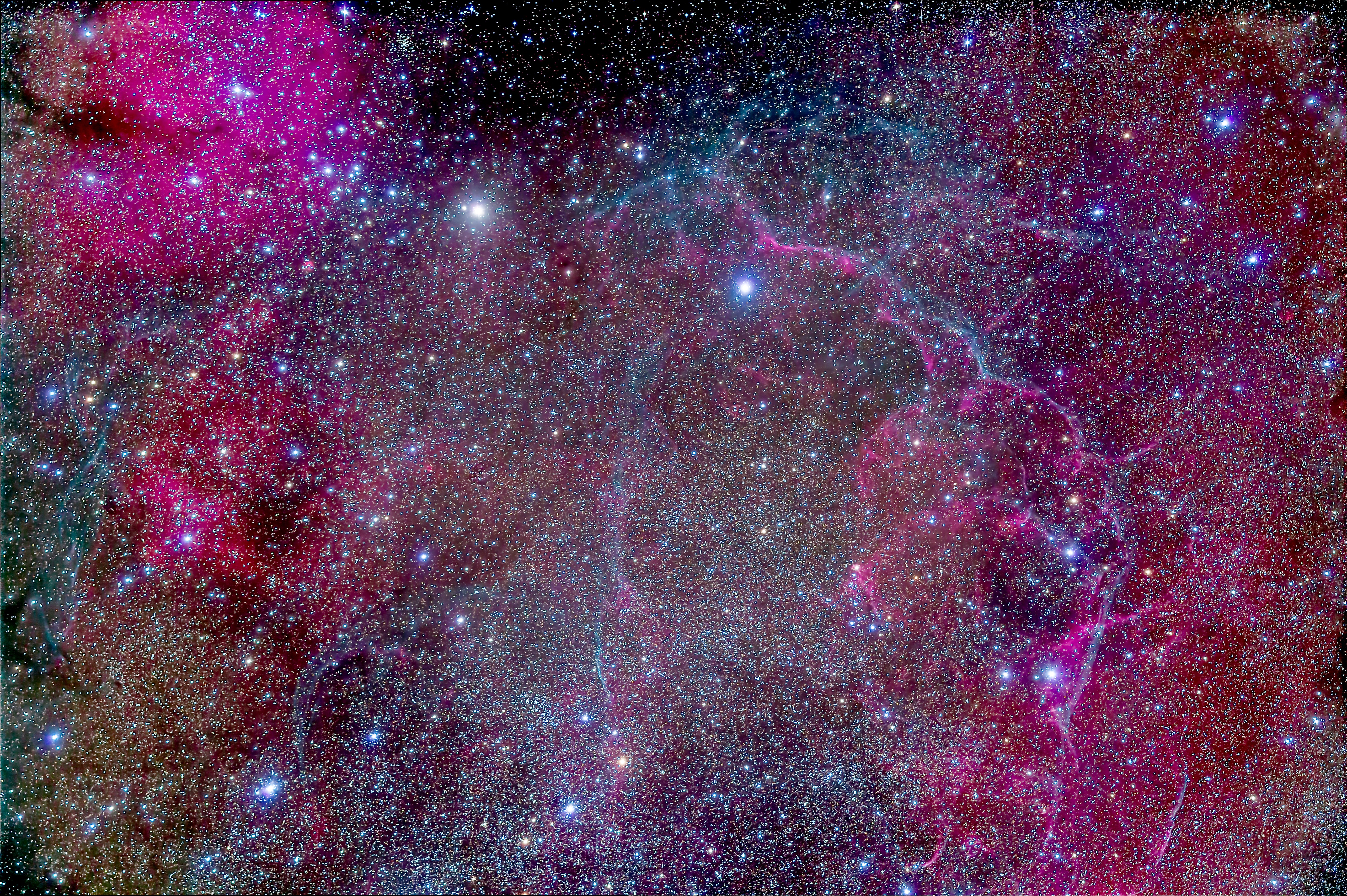
For as long as humans have been peering upward into the speckled black of night, the sky has exhibited remarkable stability. The seemingly countless stars in our Milky Way obediently hold their places within a moving tapestry that changes only slightly, even over spans of tens of thousands of years or more. Despite minor idiosyncrasies, the Moon and the five naked-eye planets predictably abide by their assigned celestial pathways.
However, roughly every few centuries or so, we get a jolt to this cosmic consistency. It comes from what is perhaps the most unpredictable naked-eye manifestation in our galaxy: the appearance of a supernova, the explosive self-destruction of a star. Rising from obscurity, a blaze graces our skies for several months to a few years before slowly fading away into new and far different avatars. In many cases, a supernova’s peak brilliance exceeds that of any nearby nighttime star or planet.
Based on studies of galaxies beyond the Milky Way, astronomers have identified at least two mechanisms producing supernovae in massive stars. One is the cessation of the nuclear reactions that hold up the star. This is quickly followed by its gravitational collapse and the precipitous buildup of its core density and temperature, leading to a rebounding flood of energy. For a short time, the resulting surge of radiation can outshine an entire galaxy, before ultimately fading and leaving behind a neutron star or a black hole. The second trigger is when a white dwarf — the remnant of a Sun-like star that previously shed its outer layers — siphons mass from a nearby companion. If this pushes the white dwarf’s mass past a critical destabilizing amount, it results in a thermonuclear blast. Many white dwarfs venturing down this path end up entirely obliterating themselves.
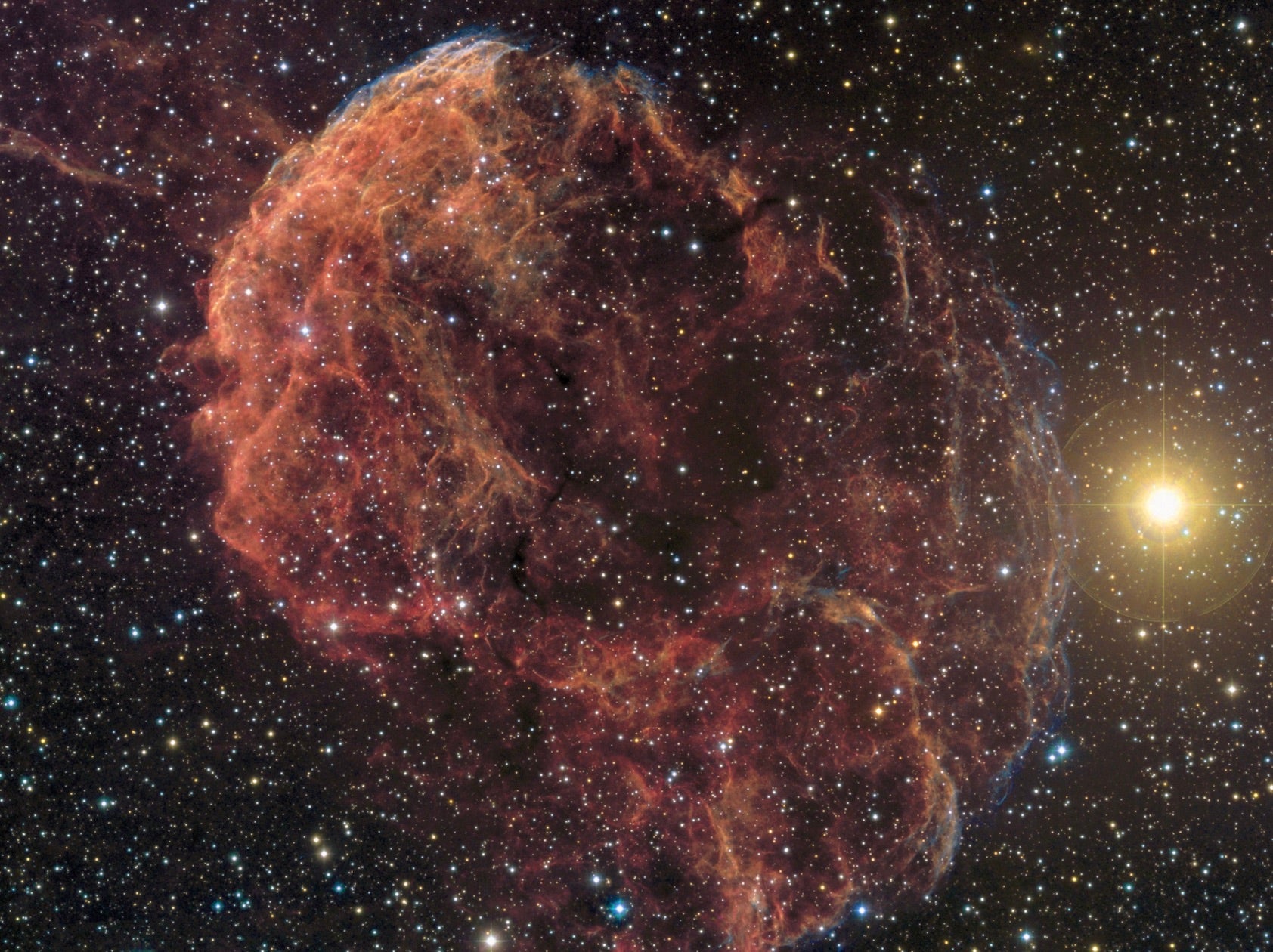
It’s hard to understate how powerful supernovae truly are — particularly those that mark stellar deaths, which we’ll focus on here. When massive stars explode with such fury, they often leave behind expansive remnants. In sharp contrast to the supernova itself, these leftovers are invisible to the naked eye and often difficult to view, even with a telescope. As the blast site ages, it slowly evolves from a tiny, compact smudge to a larger, more tenuous nebula. And if you have dark skies and decent equipment, there are a few such remnants to seek out.
Besides between 1,400 and 2,400 light-years away in Cygnus the Swan. It is a widespread system consisting of distinct wisps pushed apart over time, resembling bits of celestial cotton candy.
Peering back
The two most recently observed supernovae within the Milky Way dramatically materialized in A.D. 1572 and 1604, with the latter occurring a mere five years before the telescope was deployed as an astronomical tool. Unfortunately, neither of these stellar explosions bequeathed to us more than dim filaments unobservable with amateur instruments. In recent decades, evidence for additional, similarly difficult-to-observe remnants has surfaced. Either their cosmic fireworks were hidden from our view by star fields or interstellar gas and dust, or their occurrences predated the historical record.
Only two supernova remnants are realistic targets for most amateur telescopes, and they could not be more different. Both inhabit our region of the galaxy. The Crab Nebula (M1) in Taurus the Bull is a small patch approximately 6,500 light-years distant. The Veil Nebula resides between 1,400 and 2,400 light-years away in Cygnus the Swan. It is a widespread system consisting of distinct wisps pushed apart over time, resembling bits of celestial cotton candy.
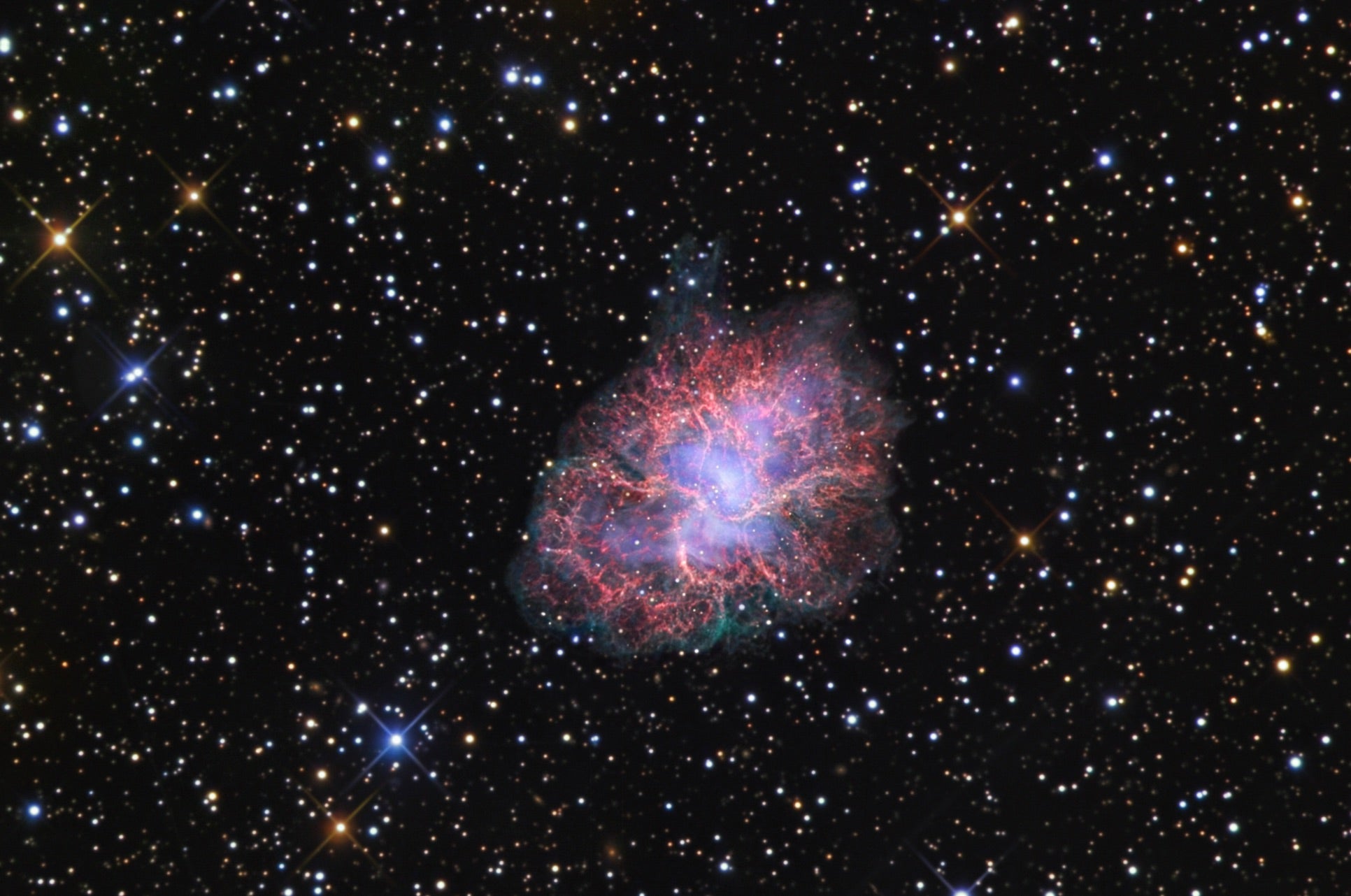
The Crab Nebula
M1 is the first entry in a catalog compiled in the 1700s by French comet hunter Charles Messier. He intended to help fellow observers separate nebulous objects from their desired cometary quarry. The Crab’s telescopically compact mass is the visible aftermath of a supernova first recorded July 4, 1054, by Chinese astronomers; Arabic records of the event also exist. Europeans likely also saw it, but records thereof are nonexistent, have been lost, or possibly were suppressed by Church authorities, whose stance was that the heavens beyond the Moon and planets were immutable. At its brightest, the Crab’s supernova progenitor was probably around magnitude –6, brighter than Venus ever appears. The surviving annals tell us that the brilliant blast was discernible in the daytime for nearly a month, and finally faded from nighttime visibility after roughly two years.
Centuries later, in 1731, English astronomer John Bevis discovered the Crab Nebula — though stumbling onto the hazy blur was surely a far cry from witnessing the spectacular event that created it. In 1844, Irish astronomer William Parsons, Third Earl of Rosse, bestowed the Crab its name after noting that its filaments through a 36-inch telescope resembled those of a cosmic crustacean.
The connection between the Crab and the 1054 supernova wasn’t clear until the early 20th century, at which point astronomers were only beginning to understand nebulae. In 1942, German-American astronomer Rudolph Minkowski reported that one of two stars at its center had an unusual optical spectrum. He concluded that this star was the driving force of the nebula, whereas the other is merely along our line of sight and not physically associated with the Crab. In 1968, observations of the true central star revealed it spins 30.2 times per second, based on detected pulses that span much of the electromagnetic spectrum. We now know this object is a pulsar, a rapidly spinning neutron star that packs more than a Sun’s mass into a sphere roughly 12 miles (19 kilometers) wide.
A small telescope or high-quality binoculars will reveal the Crab Nebula as a somewhat rectangular form with rounded edges and little other detail. With an apparent visual magnitude of 8.4, it measures 6′ by 4′, making it about one-fifth the diameter of the Moon. Photographically, the Crab emerges as a tangle of tendrils, with more details evident with increasing aperture. To track it down, look about 1° northwest of the 3rd-magnitude star Zeta (ζ) Tauri, which is about 15° northeast of Aldebaran (Alpha [α] Tauri).
The Crab’s expansion rate of nearly 1,000 miles (1,600 kilometers) per second corresponds to an annual angular size increase of 0.2″. At present, it physically spans some 10 light-years. Photos taken three or four decades apart clearly show the remnant’s edges marching outward into the star field, though the advance is too subtle to visually notice over just a few years. As this expansion continues, the Crab will slowly dissolve into oblivion. Astronomers expect that in about 100,000 years — the blink of an eye, cosmically speaking — this captivating remnant will fade into nothingness.
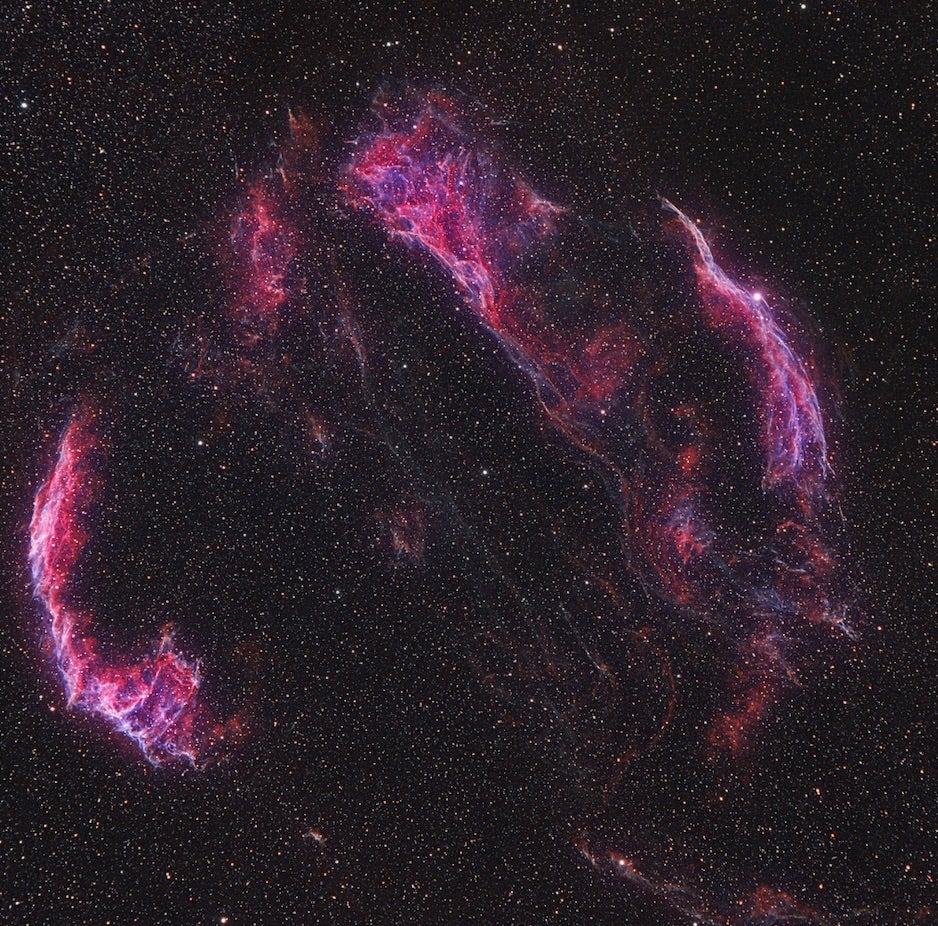
The Veil Nebula
In Cygnus, we find the only other galactic supernova remnant clearly visible through backyard instruments: the Veil Nebula, also known as the Cygnus Loop. This array of nebulosity is sufficiently spread out so that its two most significant portions each merit major designations, NGC 6960 and NGC 6992. These are separated by about 3°, or six Full Moons placed side by side. In some references, NGC 6960 refers to the entire remnant. However, the true NGC 6960 (in the nebula’s so-called Western Veil) is not as bright as NGC 6992 (in the Eastern Veil). Spotting the entire Veil requires at least a moderately sized telescope and dark skies. The nebula also includes NGC 6974 and NGC 6979, dim components situated north of its core. And don’t forget about NGC 6995 and IC 1340, which extend south of NGC 6992.
NGC 6960 appears to almost touch the 4th-magnitude star 52 Cygni, about 3° south of Epsilon (ε) Cygni. NGC 6992, being brighter than NGC 6960, is visible through good binoculars under ideal conditions. While observing the Veil as a whole, keep in mind that it is best appreciated through a wide-field eyepiece. When imaging, take advantage of the fact that larger amateur instruments will reveal a rich stellar background that nicely contrasts with the nebula’s glowing wisps of debris.
Unlike the Crab’s creation, which we can precisely pin to 1054, we can only estimate the moment of the Veil’s birth. By measuring its present rate of expansion — just under 280 miles (450 km) per second — and adjusting for slowdowns due to interactions with the surrounding interstellar material, astronomers estimate that the supernova that spawned it occurred between 5,000 and 20,000 years ago. Because the Veil is thus much older than the Crab, it has had more time to expand and its midsection has faded, which could at least partially explain the vast visual difference between the two.
Honorable mentions
From the Crab and the Veil, we travel to more demanding terrain. Partially in Taurus and spilling over into Auriga is Simeis 147, about 6° north-northeast of the Crab Nebula. This supernova remnant, located roughly 3,000 light-years away, is spread over approximately 3°. Consequently, it has very low surface brightness, making it almost impossible to see with any instrument. Discovered photographically in 1952, it displays filamentary structures that somewhat resemble those of the Veil, though not as spread out or separated. Astronomers estimate the supernova event that created Simeis 147 took place approximately 40,000 to 60,000 years ago, and a rapidly spinning pulsar still resides at its core.
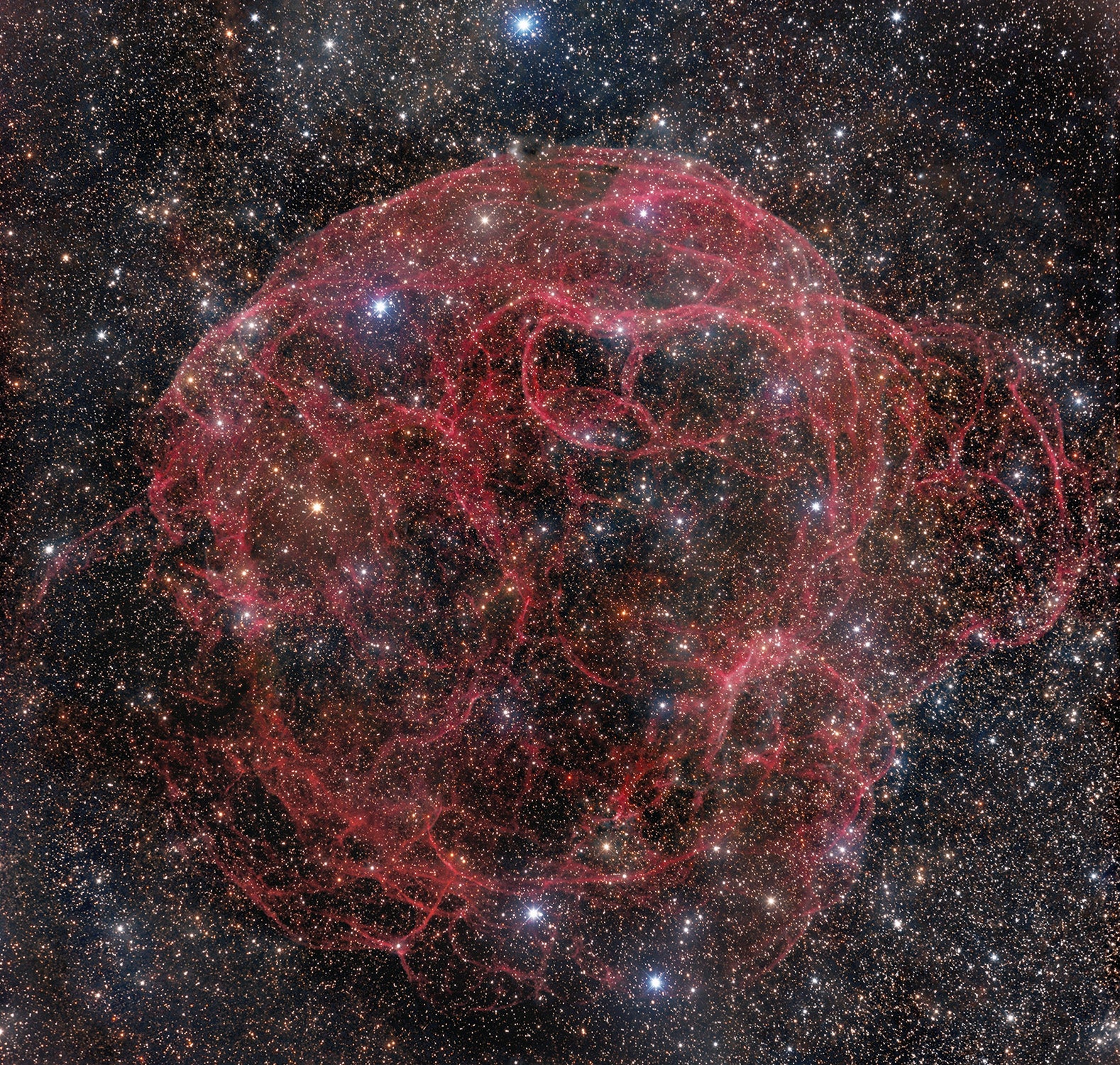
Gemini hosts a supernova remnant designated IC 443. Also commonly referred to as the Jellyfish Nebula, it covers not quite twice the diameter of the Full Moon. Although a challenge to spot, it is observable as a 12th-magnitude tangle about 10° east of the Crab Nebula, between Mu (μ) and Eta (η) Geminorum. The consensus among amateurs seems to be that you’ll require at least a 12-inch telescope to spot it and that an O-III filter enhances the view. The Jellyfish, with a poorly known distance between about 3,000 and 5,000 light-years away, is far from uniform thanks to the interstellar medium into which it is expanding, whose density varies with direction.
Much closer to Earth is the prosaically named Vela Supernova Remnant in the southern constellation Vela. Some 800 light-years away and visible as a 12th-magnitude spot, the supernova that gave birth to Vela took place approximately 12,000 years ago. Superimposed along our sight line and just 700 light-years distant is another remnant. First identified in 1998, astronomers think this nascent nebula — with the likewise mundane nickname Vela Junior — could be as young as 700 years old.
Despite the current dearth of dramatic (and easily observable) targets, as more sophisticated instruments come online, more supernova remnants are likely to reveal themselves. Although the vast majority will be barely visible, there’s always a chance that when the next supernova appears, its resulting remnant will one day give the Crab and the Veil a run for their money.









